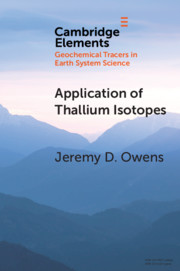Element contents
Application of Thallium Isotopes
Published online by Cambridge University Press: 05 December 2019
Summary
- Type
- Element
- Information
- Online ISBN: 9781108688697Publisher: Cambridge University PressPrint publication: 02 January 2020
References
- 24
- Cited by



